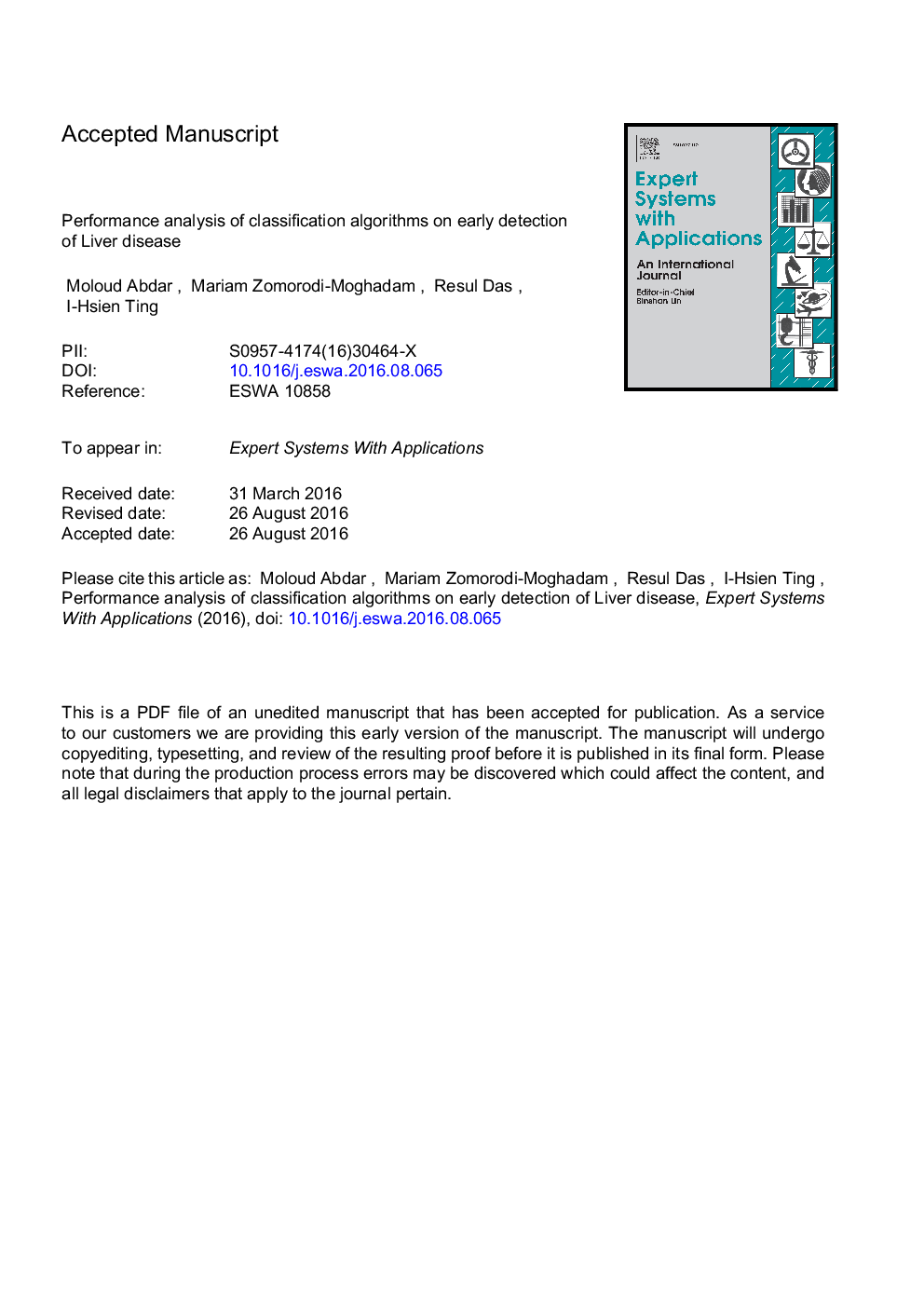| Article ID | Journal | Published Year | Pages | File Type |
|---|---|---|---|---|
| 4943726 | Expert Systems with Applications | 2017 | 27 Pages |
Abstract
In this paper, novel decision tree based algorithms is used which leads to considering more factors in general and predictions with high accuracy compared to other studies in liver disease. In this application, 583 UCI instances of liver disease dataset from the UCI repository are considered. This dataset consists of 416 records of liver disease and 167 records of healthy liver. This dataset is analyzed by two algorithms named Boosted C5.0 and CHAID algorithms. Until now there is no work in the literature that uses boosted C5.0 and CHAID for creating the rules in liver disease. Our results show that in both algorithms, the DB, ALB, SGPT, TB and A/G factors have a significant impact on predicting liver disease which according to the rules generated by both algorithms important ranges are DBÂ =Â [10.900-1.200], ALB [4.00-4.300], SGPTÂ =Â [34-37], TBÂ =Â [0.600-1.200] (by boosted C5.0), A/GÂ =Â [1.180-1.390], as well as in the Boosted C5.0 algorithm, Alkphos, SGOT and Age have significant impact in prediction of liver disease. By comparing the performance of these algorithms, it becomes clear that C5.0 algorithm via Boosting technique has an accuracy of 93.75% and this result reveals that it has a better performance than the CHAID algorithm which is 65.00%. Another important achievement of this paper is about the ability of both algorithms to produce rules in one class for liver disease. The results of our assessment show that Boosted C5.0 and CHAID algorithms are capable to produce rules for liver disease. Our results also show that boosted C5.0 considers the gender in liver disease, a factor which is missing in many other studies. Meanwhile, using the rules generated in boosted C5.0 algorithm, we obtained the important result about low susceptibility of female to liver disease than male. This factor is missing in other studies of liver disease. Therefore, our proposed computer-aided diagnostic methods as an expert and intelligent system have impressive impact on liver disease detection. Based on obtained results, we observed that our model had better performance compared to existing methods in the literature.
Related Topics
Physical Sciences and Engineering
Computer Science
Artificial Intelligence
Authors
Moloud Abdar, Mariam Zomorodi-Moghadam, Resul Das, I-Hsien Ting,
